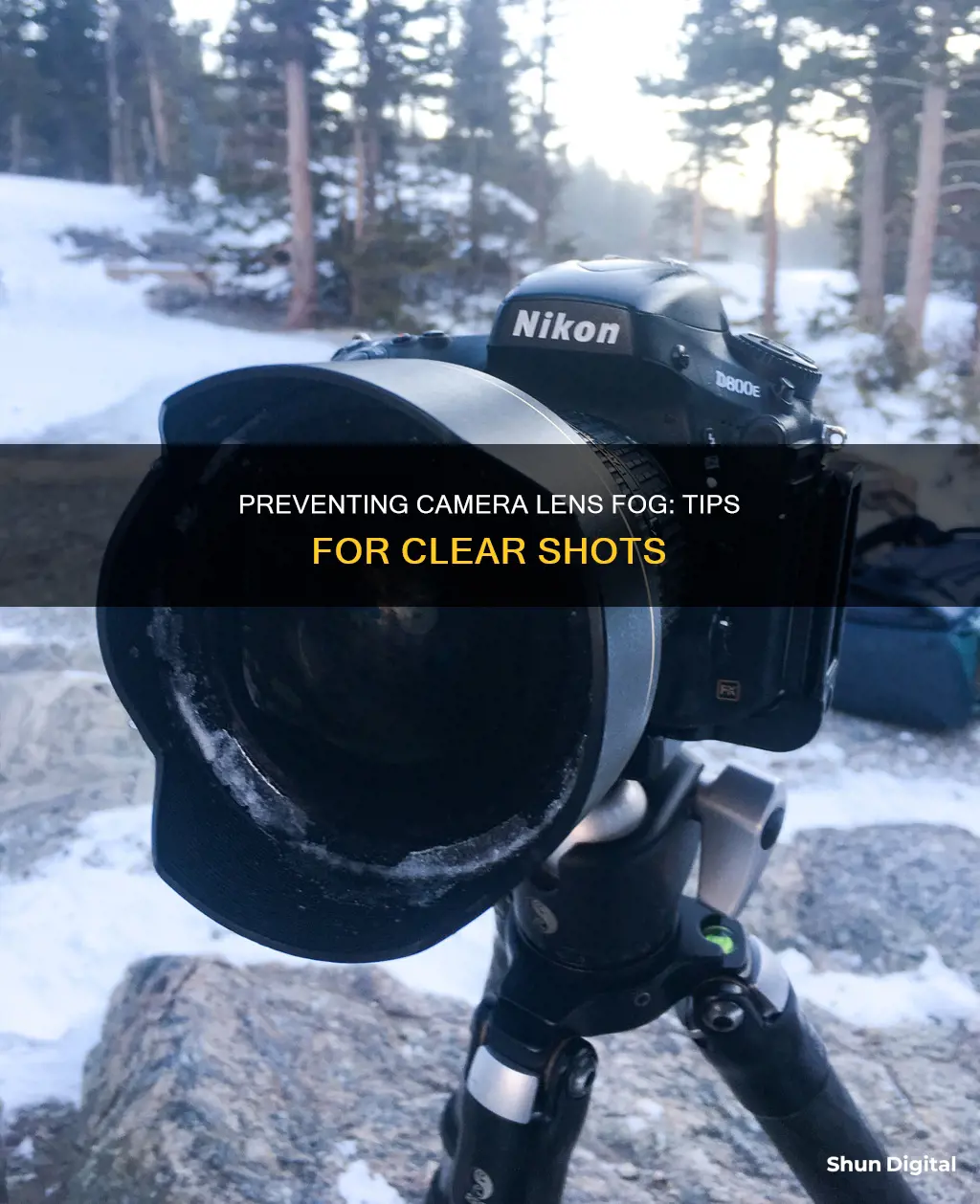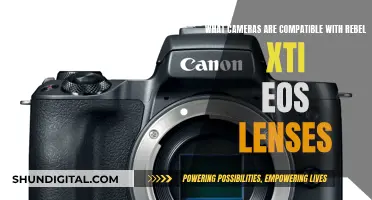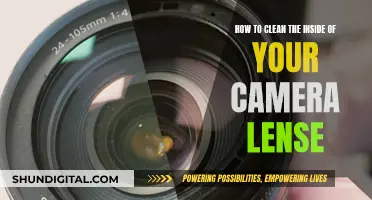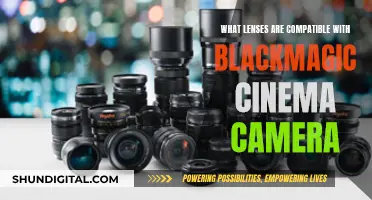
Camera lenses are prone to fogging up, especially when moving between environments with different temperatures and humidity levels. This is a common issue that can ruin photos and footage, so it's important to know how to prevent and tackle it. The process of condensation occurs when there is a significant temperature difference between the glass lens and the surrounding air, causing water vapour to condense on the glass. While a few rounds of condensation won't ruin your camera, it can cause issues over time, so it's best to take preventative measures. The key to avoiding condensation is to allow your camera and lenses to acclimate to the new environment gradually. This can be done by keeping your gear in a camera bag and allowing it to adjust to the new temperature and humidity levels. Additionally, using waterproof encasements, anti-fog treatments, and moisture absorption methods can help prevent foggy lenses. If your lens does fog up, it's important to not wipe the lens and instead let the condensation dissipate naturally.
| Characteristics | Values |
|---|---|
| Cause of fogging | Significant temperature difference between the lens and the air around it |
| How to prevent fogging | Provide a slow transition between different temperatures and humidity environments; keep the camera at a constant temperature; use anti-fog sprays; use waterproof encasement with ventilation; use silica gel to absorb moisture |
| How to deal with fogging | Be patient and wait for the lens to clear; wipe the lens with a microfiber cloth; remove filters from the lens; use another lens |
What You'll Learn

Keep your camera covered and protected
Keeping your camera covered and protected is the first step in preventing condensation from forming on your camera lens. This is especially important when transitioning between different environments with significant temperature and humidity differences, such as going from a cold, dry environment to a warm, humid one or vice versa. Here are some detailed tips to ensure your camera stays covered and protected:
- Invest in a high-quality camera bag: A good camera bag will not only protect your gear from bumps and scratches but also act as insulation when transitioning between different environments. Look for a bag with padding, which will help regulate temperature changes and slow down the acclimation process.
- Keep your gear in the camera bag: When moving between environments, make sure your camera and lenses are securely stored in your camera bag with all zippers and compartments closed. This will provide insulation and help regulate temperature changes, giving your gear time to acclimate slowly.
- Use a waterproof encasement: Consider using a waterproof covering for your camera, especially in rainy or snowy conditions. This will protect your camera from external moisture while still allowing air circulation to prevent condensation.
- Use a rain cover: If you know you'll be shooting in wet conditions, use a rain cover to keep your camera dry. You can buy one from a camera shop or online, or make your own DIY rain cover using a thin piece of plastic.
- Keep your camera warm: In cold environments, try to keep your camera close to your body to benefit from your body heat. You can also use specialised products like the Camera Duck All Weather Cover, which includes heat packets to keep your camera warm.
- Use a lens cover: A lens cover will provide an extra layer of protection by shielding the lens from direct contact with air and moisture.
- Be mindful of temperature changes: Avoid sudden temperature changes by not exposing your camera to direct heat or cold sources, such as blasting hot air from a heater or leaving your camera in a freezing environment for prolonged periods.
- Allow your gear to acclimate: When transitioning between environments, give your gear time to acclimate to the new temperature and humidity. This usually takes around 10 minutes but can vary depending on the temperature difference.
- Keep your gear dry: Use microfiber cloths to periodically wipe off any moisture from your camera and lenses. Silica gel packets or bags can also help absorb moisture and keep your gear dry.
Stealth Trail Cameras: Do They Have Lenses?
You may want to see also

Allow your camera to acclimatise to the weather
Allowing your camera to acclimatise to the weather is the best way to prevent your camera lens from fogging up. This process is simple but essential to ensuring your gear stays fog-free.
Firstly, it's important to understand how condensation works. Condensation occurs when there is a significant temperature difference between the glass of your lens and the air around it. As a result, water vapour condenses on the glass, forming tiny water droplets that can obscure your lens. This often happens when moving between environments with different temperatures and humidity levels, such as going from a cold, dry environment to a warm, humid one, or vice versa.
To prevent this, give your camera and lens time to adjust to the new environment gradually. When moving between locations, keep your gear in your camera bag with all the zippers closed. The padding in the bag acts as insulation, helping to regulate the temperature and slow down the transition to the new environment. Depending on the temperature difference and the size of your gear, you may need to leave it in the bag for a few hours to fully acclimatise.
If you're moving from a cold environment to a warmer one, avoid placing your camera bag in direct contact with a heat source, such as a heater. Instead, let it adjust to the warmer temperature gradually. Similarly, if you're moving from a warm to a colder environment, avoid placing your camera bag in an extremely cold area, like the freezer, to speed up the process. This sudden change in temperature can be detrimental to your equipment.
In addition to using your camera bag, you can place your camera inside a plastic ziplock bag before entering a new environment. This provides an extra layer of protection and slows down the temperature change.
By allowing your camera and lens to acclimatise slowly, you can effectively prevent fogging and ensure your gear stays ready for use.
Understanding Camera Lenses: Classification and Functionality
You may want to see also

Keep your camera warm
Keeping your camera warm is an important step in preventing condensation from forming on your lens. Condensation occurs when there is a significant temperature difference between the glass and the surrounding air, causing water vapour to condense on the lens. This often happens when moving your camera between environments with different temperatures and humidity levels, such as from a cold, dry environment to a warm, humid one.
To keep your camera warm and prevent condensation, you can use a camera cover or wrap it in your waterproof jacket. You can also keep the camera close to your body to transfer some heat from your skin to the camera. Additionally, there are specialised products like the Camera Duck All Weather Cover, which is waterproof and has pockets for air-activated heat packets to keep your camera warm.
Another option is to use a heating device like the Orion Dew Zapper Heating Strap, which wraps around the lens and gently replaces lost heat. However, this requires a power supply, which may not always be available when shooting in remote locations.
It's important to note that while a few rounds of condensation won't ruin your camera, repeated cycles can wear on your gear over time. Therefore, taking steps to keep your camera warm and prevent condensation is crucial for the long-term health of your equipment.
Cleaning Camera Lenses: DIY Home Solutions
You may want to see also

Use anti-fog treatment
Anti-fog treatments are a great way to prevent your camera lenses from fogging up. These treatments are designed to stop fog buildup by creating a barrier on the lens surface.
There are two main types of anti-fog treatments: sprays and wipes. Sprays are applied directly to the lens and then wiped with a microfiber cloth to create an even anti-fog barrier. Wipes, on the other hand, combine the anti-fog solution and wiping cloth into a single package, making them more convenient for on-the-go use.
When choosing an anti-fog treatment, it is important to select one that is safe for your specific lens type. Some treatments are designed specifically for anti-reflective (AR) lenses, while others are safe for all lens types. It is also important to consider the durability of the treatment—how long it will last before needing to be reapplied. Some treatments last for just a few hours, while others can provide protection for several days.
In addition to using an anti-fog treatment, you can also help prevent fogging by slowly transitioning your camera between different temperatures and humidity environments. Give your camera gear time to acclimate to the new environment before using it. This usually only takes about 10 minutes and can save you a lot of hassle dealing with foggy lenses.
By using a combination of anti-fog treatments and acclimation techniques, you can effectively prevent your camera lenses from fogging up and ensure that you're always ready to capture the perfect shot.
The Truth About Camera Lenses: Glass or Plastic?
You may want to see also

Use silica gel to absorb moisture
Silica gel is a great way to protect your camera gear from moisture damage. It is a desiccant, which means it has the ability to absorb and hold moisture, making it ideal for preventing fogging on camera lenses. Silica gel is commonly used to control humidity levels and can be easily obtained.
To use silica gel to prevent lens fogging, simply place a small packet of it near your camera lens. This will effectively reduce the chances of fog forming. If you're looking for an alternative to commercial desiccants, you can create a DIY anti-fog solution using materials like rice or cat litter, which also have moisture-absorbing properties. However, their effectiveness may vary compared to silica gel.
If your lens has already fogged up, don't panic. Place your gear inside your camera bag with a few silica gel packs tucked near the camera and lens. Make sure to remove the battery and memory cards and leave these compartments open to allow better airflow and for moisture to be completely absorbed from within your camera. You can also invest in a Hydrosorbent silica dehumidifier tin, which is designed to protect enclosed spaces from moisture.
Remember, the key to avoiding condensation is to acclimate your camera gear slowly to temperature and humidity changes. Give your gear time to adjust to new environments and always keep it stored in a safe, dry, and secure location.
APS-C Lenses: Universal Fit for All Cameras?
You may want to see also
Frequently asked questions
Your camera lens is fogging up due to the temperature and humidity changes in the environment. When you move your camera from a cold, dry environment to a warm, humid one, or vice versa, the water vapour condenses on the lens, forming tiny water droplets that make the lens foggy.
To prevent fogging, you can slowly transition your camera between different temperatures and humidity levels. Give your camera time to acclimatise by keeping it in your camera bag with all the zippers closed when moving between environments. You can also use a rain cover or waterproof encasement to protect your camera from moisture.
If your lens is foggy, do not wipe the lens as it will not help. Instead, put your camera in an airtight bag and try to remove as much air as possible. You can also place something moisture-wicking inside the bag, like uncooked rice or silica gel packs, to help absorb the moisture.
It can take some time for a foggy lens to clear up, ranging from a few minutes to half an hour or more. The time depends on the severity of the fogging and the environment your camera is in.
Yes, there are anti-fog sprays designed specifically for camera lenses that create a protective layer to prevent condensation. You can also use silica gel, which absorbs moisture and helps keep your gear dry.







